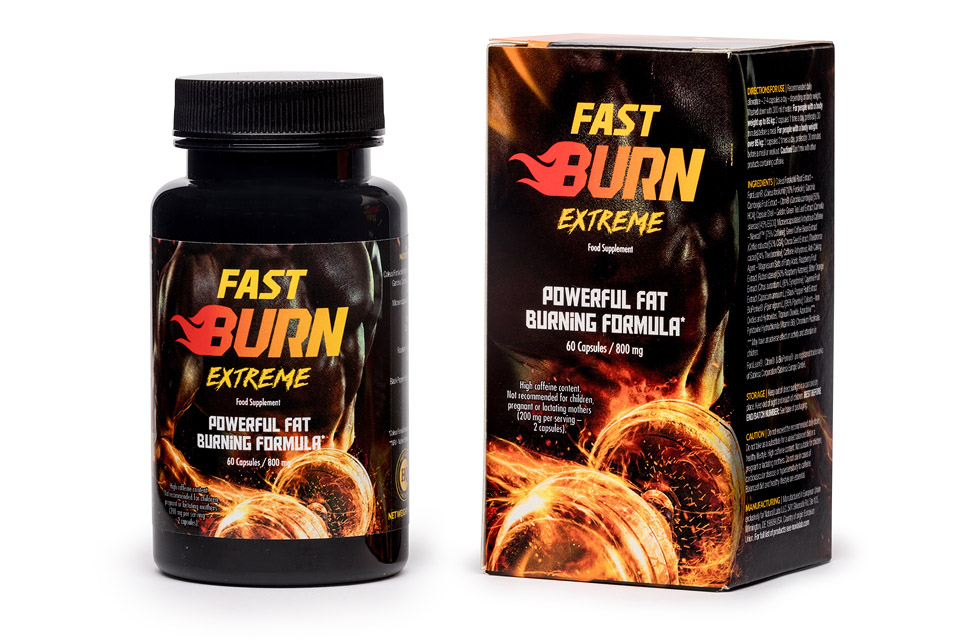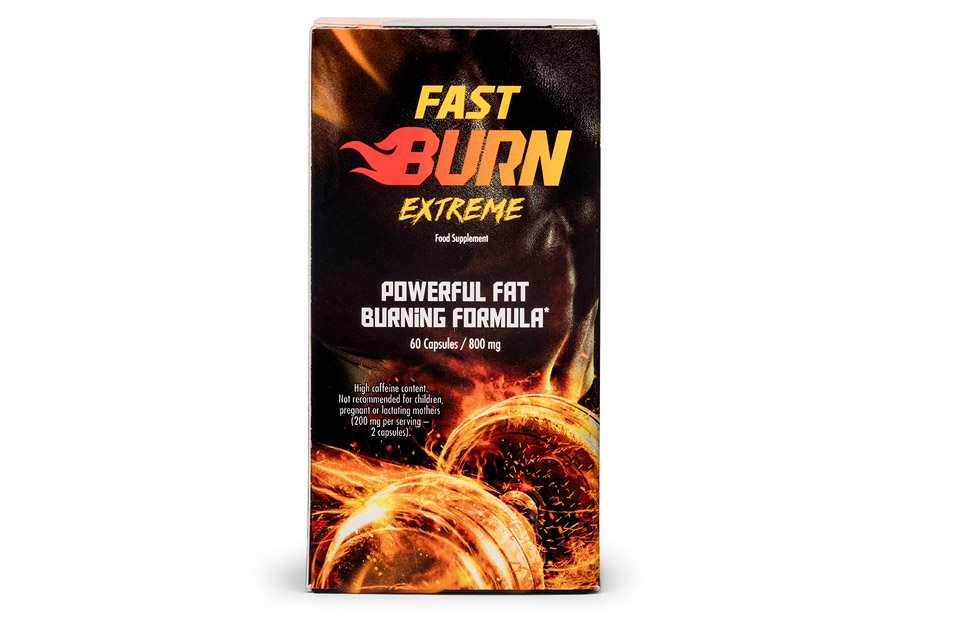How to Fasten Up Your Metabolism: Revolutionary Solutions for Stubborn Weight Loss

How to Fasten Up Your Metabolism: Revolutionary Solutions for Stubborn Weight Loss.
Have you ever wondered why some people seem to effortlessly maintain their ideal weight while others struggle with every pound? The answer often lies in the mysterious world of metabolism – your body’s internal engine that determines how efficiently you burn calories and fat. Understanding how to fasten up your metabolism isn’t just about quick fixes; it’s about transforming your body into a fat-burning powerhouse that works for you 24/7. Learning how to fasten up your metabolism effectively requires a comprehensive approach that addresses multiple factors simultaneously.
In today’s sedentary world, millions of people face the frustrating reality of a sluggish metabolism. Despite countless hours at the gym and restrictive diets, many find themselves trapped in a cycle of disappointment, watching the scale refuse to budge. This metabolic slowdown affects not just your weight, but your energy levels, mood, and overall quality of life. The question of how to fasten up your metabolism becomes increasingly urgent as traditional methods fail to deliver results.
The good news? Modern science has unlocked innovative solutions that can revolutionize your metabolic health. From strategic supplementation to lifestyle modifications, there are proven methods to accelerate your body’s natural fat-burning processes. Understanding how to fasten up your metabolism through evidence-based approaches can finally break the cycle of frustration and deliver the results you’ve been seeking. This comprehensive guide will explore these strategies and show you exactly how to fasten up your metabolism for lasting transformation.

Understanding Your Metabolic Blueprint
Your metabolism is far more complex than a simple calorie-burning machine. It’s an intricate network of biochemical processes that govern how your body converts food into energy, repairs tissues, and maintains vital functions. When you learn how to fasten up your metabolism, you’re essentially optimizing this entire system for maximum efficiency. The key to understanding how to fasten up your metabolism lies in recognizing that it’s not just about burning more calories – it’s about creating sustainable metabolic improvements.
The metabolic rate varies significantly between individuals due to factors like genetics, age, body composition, and lifestyle choices. Some people are blessed with naturally fast metabolisms, while others must work harder to achieve the same results. However, this doesn’t mean you’re destined to struggle with weight management forever.
Research shows that metabolic rate can be influenced and improved through targeted interventions. Your basal metabolic rate (BMR) – the calories your body burns at rest – accounts for approximately 60-75% of your total daily energy expenditure. By focusing on strategies that boost your BMR, you can create a significant impact on your overall caloric burn.
The key lies in understanding that metabolism isn’t just about burning calories during exercise. It’s about creating a metabolic environment where your body continuously burns fat, even while you sleep. This is where the concept of metabolic flexibility becomes crucial – your body’s ability to efficiently switch between burning carbohydrates and fats based on availability and demand.
The Science Behind Metabolic Acceleration
Modern metabolic science has revealed several pathways through which we can enhance our body’s fat-burning capacity. Thermogenesis – the process of heat production in your body – plays a crucial role in determining how to fasten up your metabolism effectively. Understanding these pathways is fundamental to mastering how to fasten up your metabolism in a way that produces lasting results.
There are several types of thermogenesis that contribute to your metabolic rate. Diet-induced thermogenesis occurs when you eat, temporarily increasing your metabolic rate as your body digests and processes food. Non-exercise activity thermogenesis (NEAT) includes all the calories burned through daily activities that aren’t formal exercise, such as fidgeting, maintaining posture, and other spontaneous muscle contractions.
Brown adipose tissue (BAT), commonly known as brown fat, is another fascinating component of metabolic acceleration. Unlike regular fat cells that store energy, brown fat burns calories to generate heat. Recent research suggests that adults retain more brown fat than previously thought, and certain interventions can activate and increase brown fat activity.
The role of mitochondria – the powerhouses of your cells – cannot be understated in metabolic health. These cellular structures are responsible for converting nutrients into usable energy. By supporting mitochondrial function and promoting mitochondrial biogenesis (the creation of new mitochondria), you can significantly enhance your metabolic capacity.
Hormonal factors also play a critical role in metabolic regulation. Thyroid hormones, insulin, cortisol, and catecholamines all influence how efficiently your body burns calories and fat. Understanding these hormonal interactions provides insights into why some metabolic interventions work better than others.
Revolutionary Supplementation Strategies
The supplement industry has evolved dramatically, offering sophisticated formulations designed to address multiple aspects of metabolic dysfunction. When exploring how to fasten up your metabolism, quality supplementation can provide the edge needed to overcome stubborn weight loss plateaus. The science behind how to fasten up your metabolism through supplementation has advanced significantly, offering targeted solutions for specific metabolic challenges.
Fast Burn Extreme represents a new generation of metabolic enhancers specifically formulated for athletes and physically active individuals. This multi-component fat burner combines scientifically-backed ingredients that work synergistically to support fat metabolism and stimulate fat reduction. Unlike single-ingredient supplements, comprehensive formulations address multiple metabolic pathways simultaneously.
The effectiveness of such supplements lies in their ability to enhance thermogenesis, improve fat oxidation, and support energy production at the cellular level. Key ingredients often include natural caffeine sources for energy and metabolic stimulation, green tea extract for its powerful antioxidant and fat-burning properties, and specialized compounds that support mitochondrial function.
L-carnitine, often included in advanced formulations, plays a crucial role in transporting fatty acids into mitochondria for energy production. This process is essential for efficient fat burning, especially during exercise. Chromium picolinate helps regulate blood sugar levels and may improve insulin sensitivity, which is vital for metabolic health.
Capsaicin, derived from chili peppers, has been shown to increase thermogenesis and fat oxidation. Studies indicate that capsaicin can temporarily boost metabolic rate by up to 5%, which may seem modest but can accumulate significant benefits over time when combined with other interventions.
Nutritional Strategies for Metabolic Optimization
Understanding how to fasten up your metabolism through nutrition goes beyond simple calorie counting. The type, timing, and combination of foods you consume can dramatically impact your metabolic rate and fat-burning capacity. Learning how to fasten up your metabolism through strategic nutrition is one of the most powerful tools at your disposal.
Protein stands out as the most metabolically active macronutrient. It requires significantly more energy to digest, absorb, and process compared to carbohydrates and fats. This thermic effect of food can increase your metabolic rate by 15-30% for several hours after eating. Including high-quality protein sources in every meal ensures your body continuously works harder to process nutrients.
The concept of meal timing, or chrono-nutrition, has gained scientific support in recent years. Research suggests that eating larger meals earlier in the day when metabolic rate is naturally higher can improve weight management outcomes. This doesn’t mean skipping dinner, but rather redistributing calories to align with your body’s natural rhythms.
Intermittent fasting has emerged as a powerful tool for metabolic enhancement. By cycling between periods of eating and fasting, you can improve insulin sensitivity, promote cellular repair processes, and enhance fat oxidation. Various fasting protocols exist, from 16:8 time-restricted eating to longer fasting periods, allowing individuals to find approaches that fit their lifestyle.
Certain foods possess natural thermogenic properties that can boost metabolism. Green tea, coffee, coconut oil, and spicy foods containing capsaicin can temporarily increase caloric burn. While these effects are modest individually, they can contribute to overall metabolic enhancement when incorporated consistently.
The quality of carbohydrates matters significantly for metabolic health. Complex carbohydrates require more energy to digest and provide sustained energy release, while simple sugars can lead to metabolic dysfunction over time. Focusing on fiber-rich, nutrient-dense carbohydrates supports stable blood sugar levels and sustained energy.
Exercise Protocols for Metabolic Enhancement
Physical activity remains one of the most powerful tools for learning how to fasten up your metabolism. However, not all exercise is created equal when it comes to metabolic benefits. Understanding how different types of training affect your metabolic rate can help you design more effective workout programs. The exercise component of how to fasten up your metabolism requires strategic planning and implementation for maximum results.
High-intensity interval training (HIIT) has revolutionized our understanding of exercise and metabolism. Short bursts of intense activity followed by recovery periods can elevate your metabolic rate for hours after your workout ends. This phenomenon, known as excess post-exercise oxygen consumption (EPOC), means you continue burning calories at an elevated rate long after you’ve finished exercising.
Resistance training provides unique metabolic benefits by building lean muscle mass. Muscle tissue is metabolically active, requiring more energy to maintain than fat tissue. Each pound of muscle burns approximately 6-7 calories per day at rest, while fat burns only 2-3 calories. This means that increasing your muscle mass creates a permanent boost to your metabolic rate.
The combination of resistance training and cardiovascular exercise creates a synergistic effect on metabolism. Compound movements that engage multiple muscle groups simultaneously provide the greatest metabolic stimulus. Exercises like squats, deadlifts, and burpees require significant energy expenditure and promote muscle growth.
Circuit training combines the benefits of resistance and cardiovascular exercise in time-efficient workouts. By moving quickly between exercises with minimal rest, you maintain an elevated heart rate while challenging your muscles. This approach maximizes caloric burn during the workout while promoting the afterburn effect.
Flexibility and mobility work, while often overlooked, play important roles in metabolic health. Proper movement patterns ensure efficient energy transfer during exercise and daily activities. Improved flexibility can enhance workout performance and reduce injury risk, allowing for more consistent training.

Lifestyle Factors That Accelerate Metabolism
Beyond diet and exercise, several lifestyle factors significantly impact your ability to understand how to fasten up your metabolism. These often-overlooked elements can make the difference between success and frustration in your weight management journey. Mastering how to fasten up your metabolism requires attention to these subtle but powerful lifestyle factors.
Sleep quality and duration profoundly affect metabolic function. During sleep, your body produces growth hormone, which supports muscle recovery and fat burning. Chronic sleep deprivation disrupts hormonal balance, leading to increased hunger hormones and decreased satiety signals. Aim for 7-9 hours of quality sleep nightly to support optimal metabolic function.
Stress management plays a crucial role in metabolic health. Chronic stress elevates cortisol levels, which can promote fat storage, particularly around the midsection. High cortisol also interferes with insulin sensitivity and can slow metabolic rate. Implementing stress-reduction techniques like meditation, yoga, or deep breathing exercises can have profound metabolic benefits.
Hydration status affects virtually every metabolic process in your body. Even mild dehydration can slow metabolic rate by 2-3%. Water is essential for fat oxidation, and drinking cold water can temporarily boost metabolism as your body works to warm it to body temperature. Aim for at least half your body weight in ounces of water daily.
Environmental factors like temperature exposure can influence metabolic rate. Cold exposure activates brown fat and increases thermogenesis, while heat exposure through saunas or hot baths can improve cardiovascular function and potentially boost metabolism. These thermal stressors, when applied appropriately, can enhance your body’s adaptive responses.
Social connections and meal sharing patterns also impact metabolic health. Eating in rushed, stressful environments can impair digestion and nutrient absorption. Taking time to enjoy meals in relaxed settings promotes better metabolic function and satisfaction from food.
Advanced Metabolic Optimization Techniques
For those seeking to push the boundaries of metabolic enhancement, several advanced techniques can provide additional benefits. These approaches require more commitment but can yield remarkable results for dedicated individuals exploring how to fasten up your metabolism. Advanced strategies for how to fasten up your metabolism represent the cutting edge of metabolic optimization.
Metabolic flexibility training involves deliberately manipulating fuel sources to improve your body’s ability to switch between burning carbohydrates and fats. This might include targeted carbohydrate cycling, where you alternate between high and low carbohydrate days based on your training schedule and goals.
Breathing techniques can influence metabolic rate and stress responses. Specific breathing patterns can activate the sympathetic nervous system, potentially increasing metabolic rate temporarily. Practices like Wim Hof breathing or other controlled breathing exercises may provide metabolic benefits while improving stress resilience.
Targeted supplementation timing can enhance the effectiveness of metabolic enhancers. Taking thermogenic supplements before workouts can amplify their effects, while certain nutrients may be more effective when consumed at specific times relative to meals or sleep.
Biohacking approaches using technology can provide insights into metabolic function. Continuous glucose monitors, heart rate variability devices, and metabolic testing can help you understand how different interventions affect your individual metabolic response.
Photobiomodulation, or red light therapy, has shown promise in enhancing mitochondrial function and potentially improving metabolic rate. While still emerging, this technology represents an exciting frontier in metabolic optimization.
Common Metabolic Obstacles and Solutions
Many people encounter specific challenges when learning how to fasten up your metabolism. Understanding these common obstacles and their solutions can help you navigate your metabolic enhancement journey more effectively. Overcoming barriers to how to fasten up your metabolism requires targeted solutions for individual challenges.
Metabolic adaptation, often called “metabolic damage,” occurs when your body adjusts to reduced caloric intake by slowing metabolic rate. This protective mechanism helped our ancestors survive famine but can frustrate modern weight loss efforts. The solution involves strategic refeed days, diet breaks, and gradual caloric adjustments rather than extreme restrictions.
Hormonal imbalances can significantly impact metabolic function. Thyroid disorders, insulin resistance, and sex hormone imbalances all affect how efficiently your body burns calories. Working with healthcare providers to address underlying hormonal issues is essential for optimal metabolic health.
Medication side effects can influence metabolic rate and weight management. Certain antidepressants, corticosteroids, and other medications may slow metabolism or promote weight gain. Discussing alternatives with your healthcare provider or implementing compensatory strategies can help mitigate these effects.
Age-related metabolic decline is a natural process but not inevitable. While metabolic rate naturally decreases with age due to muscle loss and hormonal changes, targeted interventions can slow or reverse this decline. Maintaining muscle mass through resistance training and supporting hormone production through lifestyle factors can preserve metabolic function.
Genetic factors influence metabolic rate and weight management, but they don’t determine destiny. While some people may have genetic predispositions to slower metabolism, environmental factors still play the dominant role. Understanding your genetic tendencies can help you choose the most effective interventions for your individual situation.
Measuring Progress and Adjusting Strategies
Successful metabolic enhancement requires ongoing monitoring and adjustment. Understanding how to measure progress beyond the scale ensures you’re moving in the right direction and helps you refine your approach to how to fasten up your metabolism. Tracking your progress in how to fasten up your metabolism provides valuable feedback for optimization.
Body composition analysis provides more valuable information than weight alone. As you build muscle and lose fat, the scale may not reflect your true progress. Methods like DEXA scans, bioelectrical impedance analysis, or even simple body measurements can track changes in muscle mass and fat distribution.
Metabolic rate testing can provide baseline measurements and track improvements over time. Resting metabolic rate (RMR) testing is available at many fitness facilities and provides personalized caloric needs. Some advanced facilities offer metabolic cart testing to assess fat and carbohydrate oxidation rates.
Performance metrics often improve as metabolism enhances. Tracking workout performance, energy levels throughout the day, and recovery between sessions can indicate metabolic improvements even before visible changes occur.
Subjective measures matter too. Improved sleep quality, stable energy levels, reduced cravings, and better mood often accompany metabolic enhancements. Keeping a simple daily log of these factors can help you identify which interventions provide the greatest benefits.
Regular reassessment ensures continued progress. What works initially may need adjustment as your body adapts. Periodically reviewing and modifying your approach prevents plateaus and maintains forward momentum.
The Future of Metabolic Enhancement
The field of metabolic science continues to evolve rapidly, offering exciting possibilities for those interested in how to fasten up your metabolism. Emerging research and technologies promise even more effective and personalized approaches to metabolic optimization. The future of how to fasten up your metabolism holds incredible potential for revolutionary breakthroughs.
Personalized nutrition based on genetic testing is becoming more accessible and sophisticated. Understanding your genetic variants related to metabolism, nutrient processing, and exercise response can help tailor interventions for maximum effectiveness.
Microbiome research reveals the crucial role of gut bacteria in metabolic function. Targeted probiotic supplementation and prebiotic foods can influence metabolic rate and weight management by optimizing gut health and bacterial diversity.
Wearable technology continues to advance, providing real-time insights into metabolic function. Devices that monitor heart rate variability, sleep quality, and activity levels can help optimize daily decisions for metabolic health.
Precision medicine approaches are beginning to apply to metabolic health. Blood biomarkers, hormone panels, and advanced testing can identify individual metabolic dysfunctions and guide targeted interventions.

Conclusion: Your Metabolic Transformation Journey
Learning how to fasten up your metabolism is not about finding a magic bullet or quick fix. It’s about understanding the complex interplay of factors that influence your body’s energy production and fat-burning capacity. From strategic supplementation like Fast Burn Extreme to targeted exercise protocols, nutritional optimization, and lifestyle modifications, success comes from implementing a comprehensive approach tailored to your individual needs. The journey to master how to fasten up your metabolism requires dedication, but the rewards extend far beyond weight loss.
The journey to metabolic enhancement requires patience, consistency, and willingness to experiment with different strategies. What works for one person may not work for another, making it essential to monitor your progress and adjust your approach based on results.
Remember that metabolic health is about more than just weight loss. Enhanced metabolism improves energy levels, cognitive function, mood stability, and overall quality of life. These benefits extend far beyond appearance, contributing to long-term health and vitality.
Start with the fundamentals: prioritize sleep, manage stress, stay hydrated, and maintain consistent exercise habits. From this foundation, you can explore more advanced strategies and supplementation to accelerate your progress.
The investment you make in understanding and optimizing your metabolism will pay dividends for years to come. By transforming your body into an efficient fat-burning machine, you’re not just changing your appearance – you’re enhancing your entire life experience. Take the first step today, and begin your journey toward metabolic mastery.

